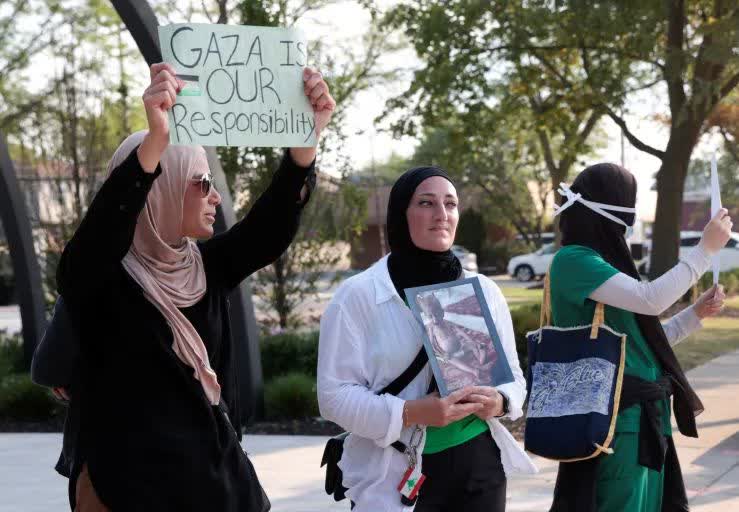As harrowing images of genocide in Gaza intensify and waves of global solidarity surge, the second annual People’s Conference for Palestine opens in Detroit, Michigan—anchored in the guiding principle “Gaza Is the Compass.”
A Gathering of Strategy and Solidarity
Held from August 29 to 31, the three-day conference—organized by a broad coalition of youth, student, labor, and cultural movements—has become one of the largest of its kind in North America, drawing thousands eager to strengthen resistance. Participants seek to forge collective strategies that keep Gaza at the center of global attention and tie the Palestinian struggle to justice and human rights movements both inside and outside the U.S.
Why Detroit?
Detroit, chosen for the second consecutive year, holds deep significance: it is home to one of North America’s oldest and largest Arab-American communities and carries a legacy of labor struggle foundational to modern Palestinian solidarity. In the early 1970s, Arab auto workers led a pioneering BDS-style campaign by striking to prevent union dues from funding Israel—an act often regarded as a foundational moment for labor solidarity with Palestine.
Conveners and Programming
This year’s conference is convened by twelve organizations including the Palestinian Youth Movement (PYM), U.S. Palestinian Community Network (USPCN), Palestinian Right to Return Coalition (Al-Awda), student groups like Students for Justice in Palestine, and others. Programming spans political panels, cultural performances, workshops, and exhibitions. New features include children’s programming, designated prayer spaces, and nursing rooms.
Voices of Resistance and Recognition
Among this year’s speakers are Representative Rashida Tlaib, Freedom Flotilla members, Handala activists Chris Smalls and Huwaida Arraf, and student organizer Mahmoud Khalil. They are slated to address themes like the Palestinian prisoners’ movement, the arms embargo on Israel, and Gaza’s centrality in global solidarity.
Featured symbolic tributes honored intellectual figures such as Edward Said and Hisham Sharabi, signaling the deep roots of Palestinian struggle within intellectual and Arab-American communities.
Rebuilding Solidarity amid Repression
Organizers underscore that the conference counters waning public engagement—the protests that once mobilized tens of thousands now draw only thousands. They attribute this to increasing repression of activists and minority voices in the U.S., emphasizing the urgency of renewing solidarity through collective action and shared inspiration from Gaza’s resistance.
Displays of Culture and Memory
One compelling installation was a physical reconstruction of the Gaza Strip, created by PYM and housed in the Moratorium NOW! Coalition offices, illustrating the history and displacement of Palestinians. Literature tables, pamphlets, art, and cultural displays were contributed by USPCN, CodePink, Jewish Voice for Peace, and other solidarity groups.
The Message: “We Are Still Here”
Activists like Laila al-Abbad, a Palestinian-American from Detroit, stressed that despite 76 years of Nakba and ongoing genocide, Palestinians remain steadfast, organized, and resolute. She emphasized that the refusal to surrender—even in the face of despair—is a victory in itself.
Tarik Raouf described the conference as a reminder to the world of the current reality of the Palestinian struggle. He highlighted the dismantling of stereotypes over the past two years and emphasized how this gathering represented resistance across races, religions, and classes, united in their humanity.
Final Thoughts
In Detroit, solidarity took tangible form—not just as protest, but as a living community rooted in culture, strategy, and memory. As one attendee declared, this is more than a conference—it’s a celebration of legacy, humanity, and unwavering determination. Gaza remains the moral and political compass guiding this movement across North America and the world.
From: al Jazeera


